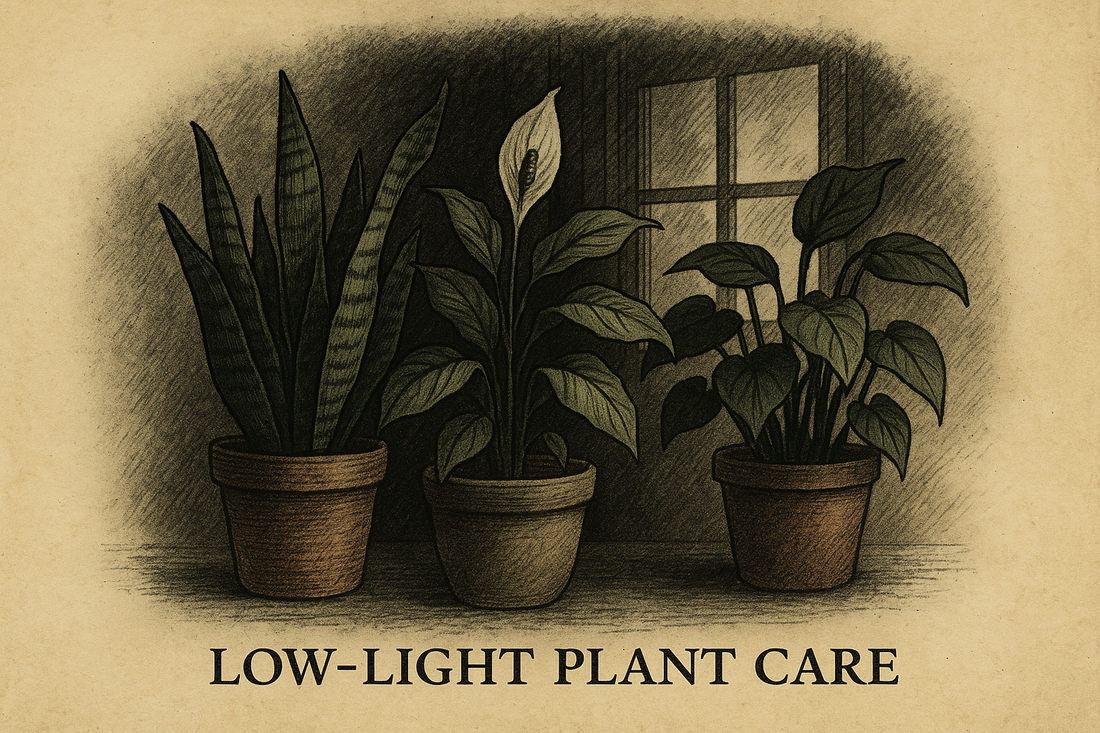
Keeping Houseplants Lively in Low-Light Rooms
Light limits set the growth ceiling
Photosynthesis slows in dim rooms, which means leaves capture less energy to power new roots and shoots. Most owners respond by watering more, yet extra moisture without extra light only rots roots. The fix is to squeeze every lumen you do have, then back it up with nutrients that strengthen the limited foliage.
Four steps that convert weak light into steady growth
-
Rotate for even exposure
Turn each pot a quarter turn every two weeks. A slow spin evens leaf size and stops the “all growth on one side” look. -
Dust leaves, don’t just mist
A thin film of dust can block up to 20 percent of available light. Wipe broad leaves with a barely damp cloth once a month. Fine-leaf ferns respond to a gentle shower under lukewarm tap water. -
Trim crowded crowns
Dense stems shade inner foliage. Remove one of every four tallest shoots. The cut stems root easily in water, so you gain fresh plants while the mother receives better light. -
Supply low-nitrogen, high-carbon feed
Roots in low-light conditions absorb less water, so they risk salt buildup if you use strong fertilizer. Two liquids applied in sequence support roots without forcing spindly stems.
The feeding plan
| Week | Product and rate | Purpose |
|---|---|---|
| 1 | RhizoCarbon 2-0-5. Mix ½ tablespoon per quart and drench soil. | Carbon feeds microbes and prompts fine-root growth. |
| 3 | Doonbeg 3-0-2. Mix 1 tablespoon per quart as a light soil soak. | Kelp offers natural cytokinin, and molasses supplies a microbe snack. |
| 5 | Pause feeding. Check leaf color and soil moisture. | Allows roots to balance water uptake with new growth. |
Repeat the six-week cycle through winter. If new leaves look half size or paler than existing ones, shorten the interval by one week.
Why these two products excel in limited light
- RhizoCarbon contains soluble carbon that soil microbes transform into organic acids. Those acids help free iron already trapped in potting mix, deepening leaf color without a heavy nitrogen push.
- Doonbeg combines kelp-derived plant hormones with sugar. Cytokinin encourages branching at lower light levels, while molasses feeds bacteria that keep root surfaces clean and permeable.
Together they supply essentials without forcing top growth the room cannot support.
Supporting moves that cost nothing
- Open blinds fully even on cloudy days. Ambient winter light still fuels photosynthesis.
- Group pots on a white or reflective tray. Light bouncing off nearby surfaces counts toward daily totals.
- Move plants to a brighter room once a month for forty-eight hours. The burst of higher light tops up carbohydrate reserves without stressing leaves adapted to shade.
Myth corner
Myth: “Low-light plants like snake plant never need feeding.”
Fact: All plants use nutrients for maintenance and repair, even if they grow slowly. They simply need lower doses on a longer interval.
Myth: “A weak plant must need more water.”
Fact: In dim rooms evaporation slows. Overwatering suffocates roots that are already running on limited energy. Feel the pot weight or use a moisture probe before adding more.
Dim corners no longer have to collect sad specimens. Rotate for balance, clean for clarity, and feed with low-salt liquids that strengthen roots first. Within one growth cycle you’ll see sturdier stems, richer greens, and fewer yellow leaf drops—even if your best window faces north
